What's New
Displaying results 3551 - 3560 of 4052
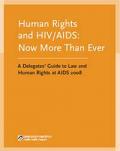
Resource | Guidelines,
Now more than ever, greater attention to human rights and legal issues in the context of HIV/AIDS is needed. Universal access to prevention, treatment, care, and support will never be achieved unless we take concrete steps to put human rights at the center of the fight against HIV/AIDS.
This guide has been prepared by the Law and Health Initiative of the Open Society Institute’s Public Health Program to highlight the many legal and human rights-themed sessions, presentations, and other events at the XVII International AIDS Conference and its satellite events in Mexico City, Mexico.
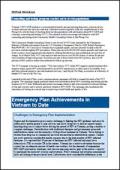
Resource | Publications,
Vietnam's HIV/AIDS epidemic is concentrated primarily among injecting drug users, commercial sex workers and men who have sex with men. Outreach workers regularly walk into neighborhoods in Hai Phong City with the hope of reaching these at-risk populations with information about HIV/AIDS and voluntary counseling and testing (VCT). The outreach workers encourage individuals to seek HIV counseling and testing at the Community Health Counseling Center in Hai Phong City.
Launched at the end of May, a new communications campaign will help to expand the reach of the VCT program. The campaign targets potential clients with information about HIV counseling and testing and the locations of VCT sites. Billboards and posters encourage clients to talk with counselors to discuss feelings of fear and concern, and to answer questions related to HIV/AIDS. The campaign also emphasizes the importance of testing as a crucial step in improving overall health and quality of life.
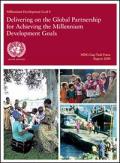
Resource | Publications,
The MDG Gap Task Force has assessed the global commitments contained in the framework of the Millennium Development Goals (MDGs) ratified by Governments at the various international events that followed the Millennium Summit. The United Nations Millennium Declaration emphasized that strengthened global partnerships for development were needed to provide the enabling environment for accelerating progress in reducing poverty, improving health and education, establishing gender equality and ensuring the protection of the environment as defined in the MDGs.
The main message of the present report is that while there has been progress on several counts, important gaps remain in delivering on the global commitments in the areas of aid, trade, debt relief, and access to new technologies and affordable essential medicines.
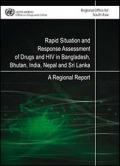
Resource | Publications,
Injecting drug use (opioids and pharmaceuticals) and HIV associated with injecting drug users (IDUs), has diffused rapidly in the South Asian region. Further, the sexual transmission of HIV from the IDUs to their non-injecting sexual partners has been established. Developing appropriate responses to this emerging problem requires a rapid situation and response assessment (RSRA) of drug users and their regular sexual partners. The United Nations Office on Drugs and Crime Regional Office for South Asia (UNODC ROSA) is implementing a regional project RAS/H13: Prevention of transmission of HIV among drug users in SAARC Countries. Through this project, a RSRA of HIV related risk behaviours, adverse health consequences, knowledge and attitudes relating to HIV/AIDS amongst drug users and their regular sex partners was carried out in five South Asian countries, namely, Bangladesh, Bhutan, India, Nepal and Sri Lanka.
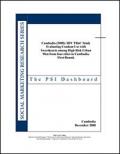
Resource | Publications,
This HIV TRaC survey was conducted among high risk urban men in four cities – Phnom Penh, Siem Reap, Battambang and Sihanoukville – in December 2008. The main objectives of this and future rounds of the study are threefold:
1. To identify determinants of condom use at last sex and consistent condom use with sweethearts among high risk urban men;
2. To monitor changes in donor and project indicators, behaviors, and behavioral determinants over time;
3. To evaluate the impact of PSI/C’s communication campaign focusing on behaviors and behavioral determinants within this target group. Although this is a baseline study, the sample has overlap with an earlier study conducted in Cambodia, allowing for evaluation analysis to be conducted on a sub-set of the sample from this round of the survey.
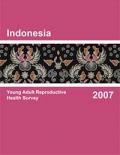
Resource | Publications,
The 2007 Indonesia Young Adult Reproductive Health Survey (IYARHS) is the second national survey on Adolescent Reproductive Health (ARH) in Indonesia. The survey is a sub-sample of the 2007 Indonesia Demographic and Health Survey (IDHS) which was carried out through cooperation between the National Family Planning Coordinating Board and Central Board of Statistics (BPS) and Ministry of Health of the Republic of Indonesia.
In the 2007 Indonesia Young Adult Reproductive Health Survey (IYARHS), a total of 19,311 young adults were interviewed; 10,830 males and 8,481 females. Sixty-five percent of survey respondents are age 15-19 and 35 percent are age 20-24. There are more males than females in the sample (56 and 44 percent, respectively). These are the same proportions as in the general unmarried population age 15-24. Female respondents are more likely to live in urban areas (56 percent), while male respondents are more likely to live in rural areas (52 percent). Unmarried women are more likely to live in urban areas than men.
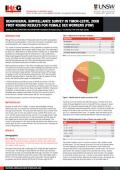
Resource | Fact Sheets,
In 2008 a behavioural surveillance survey of female sex workers in Dili was conducted by the University of New South Wales, Australia. The survey was conducted on behalf of the Timor-Leste Ministry of Health as part of the national HIV program, which is funded by the Global Fund Against HIV/AIDS, Tuberculosis and Malaria. It collected data on sexual and drug-using practices; levels of knowledge about sexually transmissible infections (STIs) and HIV; access to medical services, attitudes towards people with HIV; and demographics.

Resource | Publications,
The government of Maldives recognizes the central role of surveillance in response to HIV. The 2006 Situational Assessment of HIV in the country found that one of the gaps in the national response to HIV and AIDS was the lack of an active surveillance system that would serve as early warning device to the epidemic state of the country. The Biological and Behavioral Survey (BBS) is intended to provide not only the baseline data for evidence-based program planning, monitoring, and evaluation but also a window on the potential for an emerging epidemic in the Maldives.
The general objective of the 2008 BBS was to provide baseline data for a better understanding of the situation of the most-at-risk populations (MARPs), including the most-at-risk adolescents (MARA) in the Maldives.
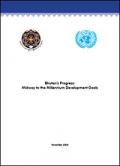
Resource | Publications,
Bhutan along with 189 other member states adopted the United Nations Millennium Declaration in 2000, committing to a new global partnership to reduce extreme poverty and setting out a series of time-bound targets with a deadline of 2015 that are known as the Millennium Development Goals (MDGs). The draft Tenth Five Year Plan of Bhutan reflects a strong MDG orientation with poverty reduction as the key objective and the MDGs have been advocated effectively to mobilize social support for the goals and promote wide national ownership.
This publication, Bhutan's Progress: Midway to the Millennium Development Goals, highlights Bhutan's achievements of the MDGs and the targets up to 2008, challenges in achieving some of the targets and for the first time, analyses the relationship between Bhutan’s development philosophy of Gross National Happiness (GNH) and the MDGs.






